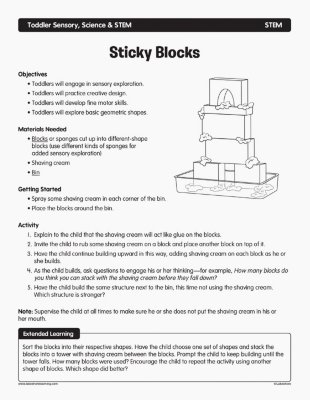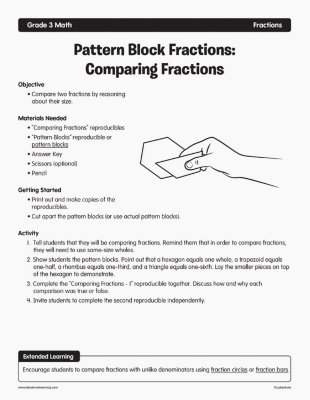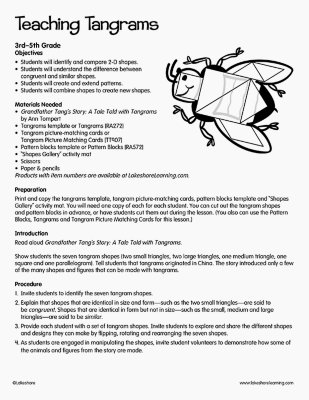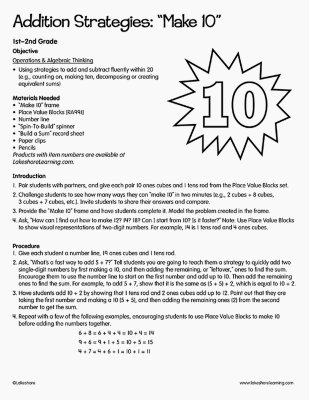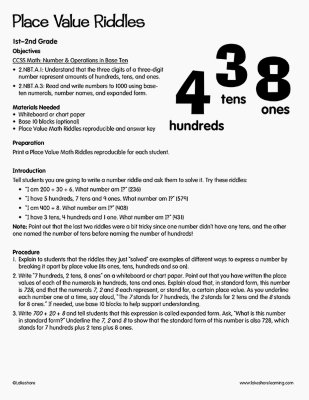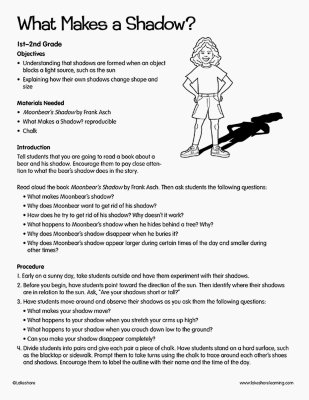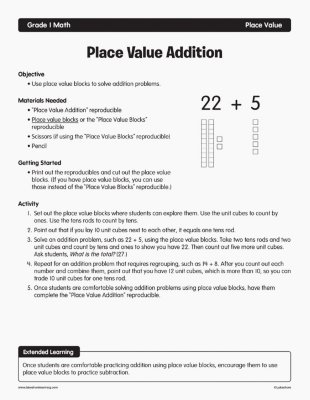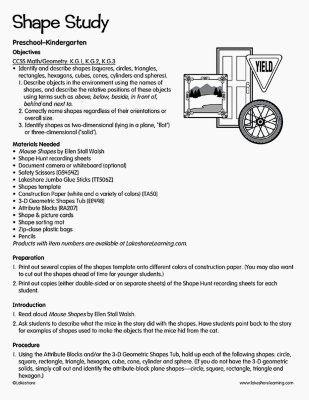Narrow by Grade
Grade
8 results for "hardwood blocks"
Sticky Blocks
Toddler
Objectives
• Toddlers will engage in sensory exploration.
• Toddlers will practice creative design.
• Toddlers will develop fine motor skills.
• Toddlers will explore basic geometric shapes.
Pattern Block Fractions: Comparing Fractions
3rd Grade
Objective
- Compare two fractions by reasoning about their size.
Teaching Tangrams
2nd Grade
Objectives Students will identify and compare 2-D shapes. Students will understand the difference between congruent and similar shapes. Students will create and extend patterns. Students will combine shapes to create new shapes. Materials Needed Grandfather Tang’s Story: A Tale Told with Tangrams by Ann Tompert Tangrams template or Tangrams Tangram picture-matching cards or Tangram Picture Matching Cards Pattern blocks template or Pattern Blocks “Shapes Gallery” activity mat Scissors Paper & pencils Preparation: Print and copy the tangrams template, tangram picture-matching cards, pattern blocks template and “Shapes Gallery” activity mat. You will need one copy of each for each student. You can cut out the tangram shapes and pattern blocks in advance, or have students cut them out during the lesson. (You also can use the Pattern Blocks, Tangrams and Tangram Picture Matching Cards for this lesson.) Introduction Read aloud Grandfather Tang’s Story: A Tale Told with Tangrams. Show students the seven tangram shapes (two small triangles, two large triangles, one medium triangle, one square and one parallelogram). Tell students that tangrams originated in China. The story introduced only a few of the many shapes and figures that can be made with tangrams.
View Lesson PlanAddition Strategies: "Make 10"
1st Grade - 2nd Grade
Objective Operations & Algebraic Thinking Using strategies to add and subtract fluently within 20 (e.g., counting on, making ten, decomposing or creating equivalent sums) Materials Needed “Make 10” frame Place Value Blocks Number line “Spin-To-Build” spinner “Build a Sum” record sheet Paper clips Pencils Introduction Pair students with partners, and give each pair 10 ones cubes and 1 tens rod from the Place Value Blocks set. Challenge students to see how many ways they can “make 10” in two minutes (e.g., 2 cubes + 8 cubes, 3 cubes + 7 cubes, etc.). Invite students to share their answers and compare. Provide the “Make 10” frame and have students complete it. Model the problem created in the frame. Ask, “How can I find out how to make 12? 14? 18? Can I start from 10? Is it faster?” Note: Use Place Value Blocks to show visual representations of two-digit numbers. For example, 14 is 1 tens rod and 4 ones cubes.
View Lesson PlanPlace Value Riddles
2nd Grade
Objectives CCSS Math: Number & Operations in Base Ten 2.NBT.A.1: Understand that the three digits of a three-digit number represent amounts of hundreds, tens, and ones. 2.NBT.A.3: Read and write numbers to 1000 using base-ten numerals, number names, and expanded form. Materials Needed Whiteboard or chart paper Base 10 blocks (optional) Place Value Math Riddles reproducible and answer key Introduction Tell students you are going to write a number riddle and ask them to solve it. Try these riddles: “I am 200 + 30 + 6. What number am I?” (236) “I have 5 hundreds, 7 tens and 9 ones. What number am I?” (579) “I am 400 + 8. What number am I?” (408) “I have 3 tens, 4 hundreds and 1 one. What number am I?” (431) Note: Point out that the last two riddles were a bit tricky since one number didn’t have any tens, and the other one named the number of tens before naming the number of hundreds!
View Lesson PlanWhat Makes a Shadow?
1st Grade
Objectives Understanding that shadows are formed when an object blocks a light source, such as the sun Explaining how their own shadows change shape and size Materials Needed Moonbear’s Shadow by Frank Asch What Makes a Shadow? reproducible Chalk Introduction Tell students that you are going to read a book about a bear and his shadow. Encourage them to pay close attention to what the bear’s shadow does in the story. Read aloud the book Moonbear’s Shadow by Frank Asch. Then ask students the following questions: What makes Moonbear’s shadow? Why does Moonbear want to get rid of his shadow? How does he try to get rid of his shadow? Why doesn’t it work? What happens to Moonbear’s shadow when he hides behind a tree? Why? Why does Moonbear’s shadow disappear when he buries it? Why does Moonbear’s shadow appear larger during certain times of the day and smaller during other times?
View Lesson PlanPlace Value Addition
1st Grade
Objective
- Use place value blocks to solve addition problems.
Shape Study
Kindergarten
Objectives CCSS Math/Geometry: K.G.1, K.G.2, K.G.3 Identify and describe shapes (squares, circles, triangles, rectangles, hexagons, cubes, cones, cylinders and spheres). Describe objects in the environment using the names of shapes, and describe the relative positions of these objects using terms such as above, below, beside, in front of, behind and next to. Correctly name shapes regardless of their orientations or overall size. Identify shapes as two-dimensional (lying in a plane, “flat”) or three-dimensional (“solid”). Materials Needed Mouse Shapes by Ellen Stoll Walsh Shape Hunt recording sheets Document camera or whiteboard (optional) Safety Scissors Lakeshore Jumbo Glue Sticks Shapes template Construction Paper (white and a variety of colors) 3-D Geometric Shapes Tub Attribute Blocks Shape & picture cards Shape sorting mat Zip-close plastic bags Pencils Preparation Print out several copies of the shapes template onto different colors of construction paper. (You may also want to cut out the shapes ahead of time for younger students.) Print out copies (either double-sided or on separate sheets) of the Shape Hunt recording sheets for each student. Introduction Read aloud Mouse Shapes by Ellen Stoll Walsh. Ask students to describe what the mice in the story did with the shapes. Have students point back to the story for examples of shapes used to make the objects that the mice hid from the cat.
View Lesson Plan